DELHI
Delhi is the capital city of India and its long history can be traced in its many carefully-preserved monuments, ancient forts and tombs. It is home to three World Heritage monuments—Qutub Minar, Red Fort and Humayun’s Tomb that have survived many centuries, and give an idea of architectural wonders created by emperors in the past. Central Delhi, with its tree-lined avenues, imposing structures and buildings such as the Rashtrapati Bhavan, Parliament House and India Gate, reflect Delhi’s colonial past. A number of museums provide a glimpse into the country’s fascinating history.

Places to visit
Gandhi Smriti and Raj Ghat
Raj Ghat is the memorial of Mahatma Gandhi, the Father of the Nation. A square platform of black marble marks the spot where Mahatma Gandhi was cremated following his assassination in 1948. It is surrounded by a beautiful park and two museums dedicated to Gandhiji.
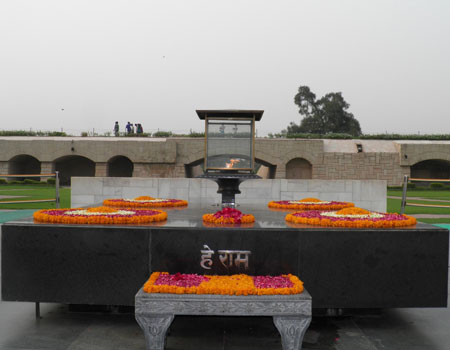

Jantar Mantar
This structure is one of Maharaja Jai Singh 2's observatories constructed in 1725 and is dominated by a huge sundial known as the Prince of Dials. This is an equinoctial sundial, consisting of a gigantic triangular gnomon with the hypotenuse parallel to the Earth's axis. On either side of the gnomon is a quadrant of a circle, parallel to the plane of the equator. The instrument is intended to measure the time of day, correct to half a second and declination of the Sun and the other heavenly bodies.
Akshardham
Akshardham' means the divine abode of God. It is hailed as an eternal place of devotion, purity and peace. Swaminarayan Akshardham at New Delhi is a Mandir – an abode of God, a Hindu house of worship, and a spiritual and cultural campus dedicated to devotion, learning and harmony. Timeless Hindu spiritual messages, vibrant devotional traditions and ancient architecture all are echoed in its art and architecture.The mandir is a humble tribute to Bhagwan Swaminarayan (1781- 1830), the avatars, devas and great sages of Hinduism. The traditionally-styled complex was inaugurated on 6 November 2005.
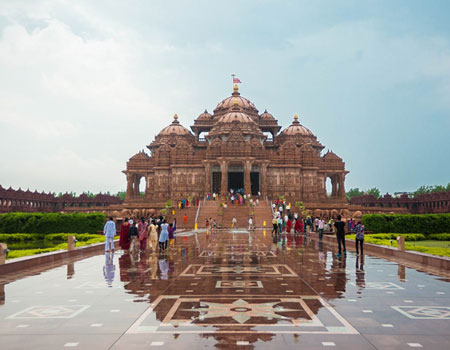
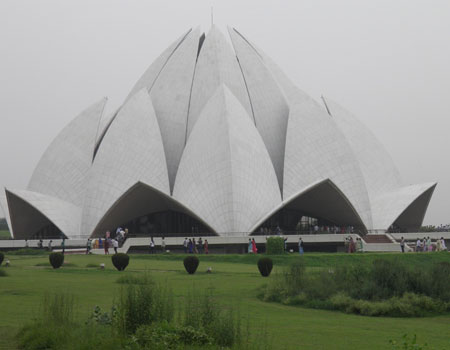
Bahai (Lotus) Temple
This temple is built in the shape of a lotus flower and is the last of seven Major Bahai's temples built around the world. Completed in1986 it is set among the lush green landscaped gardens. The structure is made up of pure white marble and the architect Furiburz Sabha chose the lotus as the symbol common to Hinduism, Buddhism, Jainism and Islam. Around the blooming petals there are nine pools of water, which light up, in natural light.
Gurdwara Bangla Sahib
This sacred shrine has association with the eighth Sikh Guru, Guru Har Krishan, and the the pool inside its complex, known as the "Sarovar", is considered holy by Sikhs and is known as "Amrit". The building was built by SikhGeneral, Sardar Bhagel Singh in 1783, who supervised the construction of nine Sikh shrines in Delhi in the same year, during the reign of Mughal Emperor, Shah Alam II. Originally this place was the Bungalow ("haveli" or "bangla") of Mirza Raja Jai Singh, hence the name "Bangla Sahib".

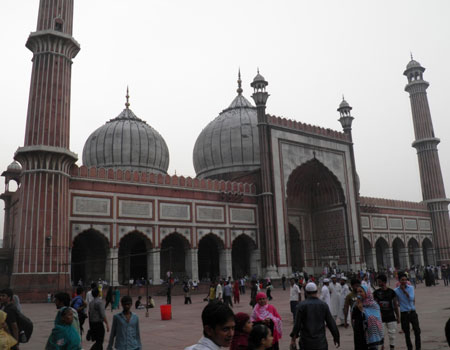
Jama Masjid
The meticulous design and beauty of the Jama Masjid is a fine example of the awe-inspiring works of the
Mughal architecture. The last architectural extravagance of Shah Jahan was Jama Masjid in Delhi, the largest Mosque in India, completed in the year 1658.
Jama Masjid comprises of red sandstone and white marble and extends about 1,200 square meters in area with three gateways,
four towers and two minarets which stand 40 meters in height.
Qutab Minar
Qutab Minar is the tallest minaret in the world made up of bricks built in 1193 by Qutab-ud-din Aibak. Qutab Minar is a 73-metre tall tapering tower of five storeys, with a 14.3 metres base diameter, reducing to 2.7 metres at the top. The first three storeys are made of red sandstone; the fourth and fifth storeys are of marble and sandstone. At the foot of the tower is the Quwwat-ul-Islam Mosque, the first mosque to be built in India.
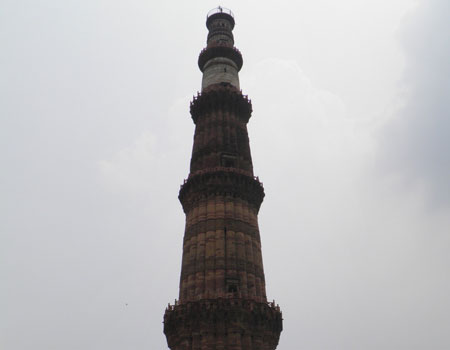
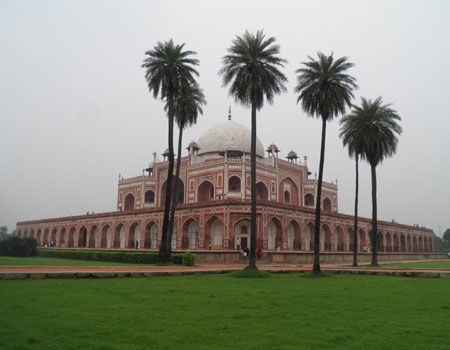
Humayun’s Tomb
This is the first of the grand dynastic mausoleums that were to become synonyms of Mughal architecture
with the architectural style reaching its zenith 80 years later at the later Taj Mahal. Humayun’s Tomb stands within a complex of 27.04 ha. that includes
other contemporary, 16thcentury Mughal garden-tombs such as Nila Gumbad, Isa Khan, Bu Halima, Afsarwala, Barber’s Tomb and the complex where the craftsmen
employed for the Building of Humayun’s Tomb stayed, the Arab Serai.
Humayun’s Tomb was built in the 1560’s, with the patronage of Humayun’s son, the great Emperor Akbar. Persian and Indian craftsmen worked together to build the garden-tomb,
far grander than any tomb built before in the Islamic world.
India Gate
At the centre of New Delhi stands the 42 m high India Gate, an "Arc-de-Triomphe" like archway in the middle
of a crossroad. Almost similar to its French counterpart, it commemorates the 70,000 Indian soldiers who lost their lives fighting for the British Army during
the World War I. The memorial bears the names of more than 13,516 British and Indian soldiers killed in the Northwestern Frontier in the Afghan war of 1919.
The foundation stone of India Gate was laid by His Royal Highness, the Duke of Connaught in 1921 and it was designed by Edwin Lutyens. The monument was dedicated to the
nation 10 years later by the then Viceroy, Lord Irwin. Another memorial, Amar Jawan Jyoti was added much later, after India got its independence. The eternal flame burns
day and night under the arch to remind the nation of soldiers who laid down their lives in the Indo-Pakistan War of December 1971.

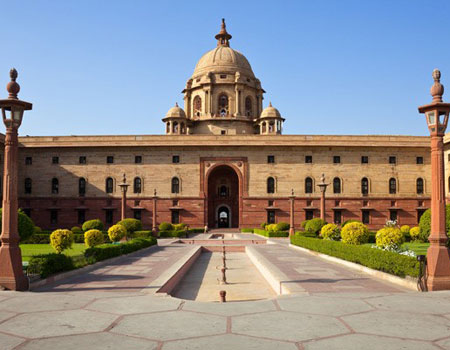
Rashtrapati Bhavan
The splendour of the Rashtrapati Bhavan is multi-dimensional. It is a vast mansion and its architecture is
breathtaking. More than these, it has a hallowed existence in the annals of democracy for being the residence of the President of the largest democracy
in the world and the largest residence of any head of the state in the world.
The present day Rashtrapati Bhavan was the erstwhile residence of the British Viceroy. Its architect was Edwin Landseer Lutyens.
It was constructed to affirm the permanence of British rule in India. This vast mansion has got four floors and 340 rooms. With a floor area of 200,
000 square feet it is built by using 700 million bricks and three million cubic feet of stone. Hardly any steel has gone into the construction of the building.
Red Fort
The Red Fort Complex was built as the palace fort of Shahjahanabad – the new capital of the fifth Mughal Emperor of India, Shah Jahan. The fort served as the royal residence of the Mughal emperors from 1648 to 1857. The planning of the palace is based on Islamic prototypes, but each pavilion reveals architectural elements typical of Mughal building, reflecting a fusion of Persian, Timurid and Hindu traditions
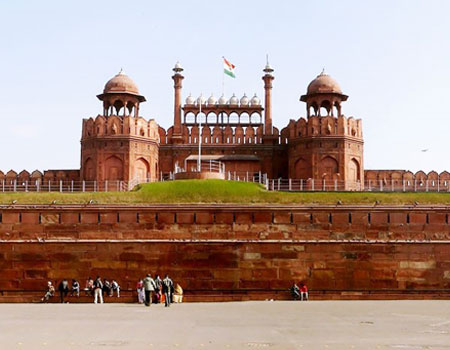
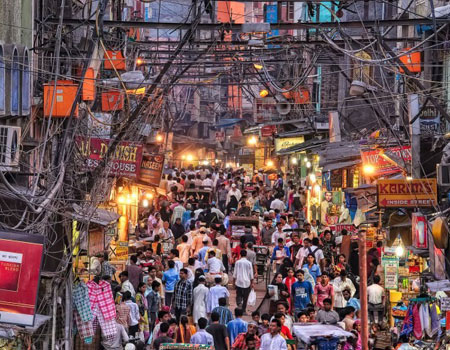
Chandni Chowk
The bustling wholesale market here is an excellent place to shop, explore, eat and soak up life in New Delhi. It is the perfect place to shop in and this densely populated market has been around for more than three centuries and was once visited by merchants from Turkey, China and even Holland. Dariba Kalan is known for its pearl, gold and silver jewellery and attar (natural perfumes). A visit to Khari Baoli is a must for the spice-lover and Kinari Bazaar is the best place to look for zari and zardozi trimmings and tinsel. The cloth bazaar of Katra Neel offers all kinds of fabrics such as silks, satin, crepe, cotton and muslin. Bhagirath Palace is Asia's largest market for electrical goods and also offers medical equipment and allopathic medicines. Moti Bazaar is famous for shawls and pearls and Tilak Bazaar for chemicals.


